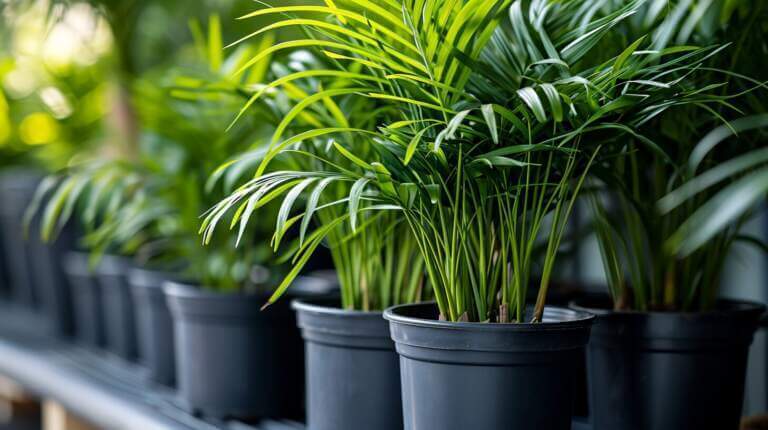Common Reasons for Pothos Leaves Drooping and How to Fix Them
Have you noticed your pothos plant’s leaves drooping? Don’t worry, you’re not alone. As the saying goes, ‘A drooping leaf is a cry for help.’
In this article, we will explore the common causes behind drooping pothos leaves, such as incorrect watering techniques, nutritional deficiencies, and environmental factors.
Furthermore, we will provide you with practical tips to revive your pothos plant and bring back its lush and vibrant foliage.
So, let’s dive in and give your beloved pothos the care it deserves.
Key Takeaways
- Overwatering and waterlogged roots are common causes of drooping pothos leaves.
- Nutritional deficiencies and imbalances can impact leaf growth and health.
- Insufficient lighting conditions can lead to pale or yellowing leaves.
- Proper watering techniques, adequate drainage, and regular inspection for pests are key to reviving drooping pothos leaves.
Common Causes of Pothos Drooping Leaves
Interestingly, there are several common causes that can lead to drooping pothos leaves, including overwatering and inadequate lighting conditions. Overwatering problems are one of the most common reasons for drooping leaves in pothos plants. Pothos plants prefer a well-draining soil, and overwatering can cause the roots to become waterlogged, leading to root rot and poor nutrient absorption. To avoid overwatering, it is important to allow the top inch of soil to dry out before watering the plant again.
Pests and diseases can also contribute to drooping leaves in pothos plants. Common pests that can affect pothos include spider mites, mealybugs, and scale insects. These pests can suck the sap from the leaves, causing them to wilt and droop. Diseases such as fungal infections can also cause leaf wilting. To prevent pest infestations and diseases, it is important to regularly inspect the plant for any signs of pests or infections and take appropriate measures to control them.
Pothos Plant Leaves Drooping Due to Incorrect Watering Techniques
One common mistake that gardeners make is overwatering their pothos plants, which can lead to drooping leaves and root rot. Overwatering consequences include suffocating the roots and preventing oxygen from reaching them, which can result in root rot. To avoid overwatering, follow these guidelines:
- Check the soil moisture: Stick your finger about an inch into the soil. If it feels dry, it’s time to water your pothos.
- Watering frequency: Pothos plants prefer slightly dry conditions, so water them only when the top inch of soil feels dry. Avoid watering too frequently, as it can lead to root rot.
- Watering technique: Ensure that water drains out of the pot’s drainage holes. Discard any excess water that collects in the saucer.
- Use well-draining soil: Pothos plants thrive in well-draining soil that allows excess water to flow freely. A mix of potting soil, perlite, and peat moss can provide the ideal growing medium.
In addition to overwatering consequences, underwatering can also cause droopy leaves in pothos plants. Insufficient water supply can lead to dehydration and wilting. Continuously monitor the moisture levels to prevent both overwatering and underwatering.
Now, let’s explore another important aspect of maintaining healthy pothos plants: nutritional deficiencies and imbalances.
Nutritional Deficiencies and Imbalances
To maintain optimal plant health, it is crucial to address nutritional deficiencies and imbalances through proper fertilization and soil amendments. When it comes to pothos plants, providing them with the right nutrients is essential for healthy and vibrant leaves. One important aspect to consider is the soil pH, as it directly affects the plant’s ability to absorb nutrients. Pothos plants thrive in a slightly acidic to neutral pH range of 6.1 to 7.0. If the soil pH is too low or too high, it can lead to nutrient deficiencies or toxicities, resulting in poor leaf growth and overall plant health.
In addition to soil pH, proper fertilization is key to ensuring healthy pothos leaves. Fertilizers provide essential nutrients that may be lacking in the soil, promoting vigorous growth and vibrant foliage. Nitrogen, phosphorus, and potassium are the primary macronutrients necessary for plant growth, and a balanced fertilizer with a ratio of 3:1:2 or 3:1:3 is ideal for pothos plants.
To help you understand the importance of proper fertilization and soil amendments for healthy pothos leaves, here is a table outlining the essential nutrients and their functions:
| Nutrient | Function |
|---|---|
| Nitrogen | Promotes leaf and stem growth |
| Phosphorus | Supports root development and flower production |
| Potassium | Enhances overall plant health and disease resistance |
| Calcium | Strengthens cell walls and supports nutrient uptake |
| Magnesium | Essential for chlorophyll production |
Environmental Factors Affecting Drooping Pothos Leaves
In order to understand the impact of environmental factors on pothos leaves, it is important to consider the role of light exposure and temperature fluctuations.
Light requirements for healthy pothos growth are critical, as these plants thrive in bright, indirect light. Insufficient light can lead to pale or yellowing leaves, while excessive light can cause leaf burn. It is recommended to place pothos plants near a window with filtered light or use artificial grow lights to provide the necessary light intensity.
Temperature and humidity considerations also play a significant role in the health of pothos leaves. Pothos plants prefer temperatures between 65-85°F (18-29°C). Fluctuations outside of this range can stress the plant and lead to leaf issues. Additionally, pothos plants thrive in moderate to high humidity levels. Dry air can result in leaf browning and curling.
To ensure the optimal environment for your pothos plant, consider the following:
- Provide bright, indirect light to promote healthy growth.
- Avoid exposing the plant to direct sunlight, which can cause leaf burn.
- Maintain a temperature range of 65-85°F (18-29°C) for optimal growth.
- Keep humidity levels moderate to high by misting the leaves or placing the plant on a tray filled with water and pebbles.
Practical Tips to Revive Droopy Pothos Plant Leaves
If your pothos leaves are drooping, implementing proper watering techniques and ensuring adequate drainage can help revive their vitality. Pothos plants, also known as devil’s ivy, are popular houseplants due to their attractive, trailing vines and low-maintenance nature. However, drooping leaves can be a sign of stress or improper care.
One effective pruning technique for pothos plants is to trim back any overgrown or damaged vines. This not only improves the overall appearance of the plant but also encourages new growth and prevents the plant from becoming leggy. When pruning, make sure to use clean, sharp tools to avoid causing unnecessary damage to the plant.
In addition to proper pruning, it is important to troubleshoot common pest issues that may be affecting your pothos plant. Pests such as spider mites, mealybugs, and aphids can infest the leaves and cause them to droop. To combat these pests, regularly inspect the plant for any signs of infestation and take appropriate measures such as using insecticidal soap or neem oil to eliminate them.
FAQs
Will Following These Tips Make My Drooping Pothos Leaves Fuller and Bushier?
Looking to enhance the appearance of your drooping Pothos leaves? Try implementing these simple tricks to promote lushness in pothos foliage. Adjusting the amount of light, providing adequate water, and regular pruning can help your Pothos plant thrive. By following these tips, you can expect your Pothos leaves to become fuller and bushier, adding a touch of greenery to your space.
Is It Normal for Pothos Leaves to Droop After Repotting?
When repotting a pothos plant, it is not uncommon for its leaves to droop temporarily due to the stress of being uprooted and transplanted into a new container. This can be a sign of repotting stress.
Additionally, overwatering can also cause the leaves to droop. It is important to allow the soil to dry out slightly between waterings to prevent overwatering.
Proper care, including appropriate watering and providing adequate light, can help alleviate the drooping leaves and promote healthy growth.
What causes pothos leaves to start drooping and wilting?
Drooping or wilting leaves on your pothos typically means it is getting too much or too little water. Check that you are watering appropriately for your plant’s needs.
What are some common reasons a formerly healthy pothos may start to wilt?
Other reasons for drooping include low humidity, too much sun, pests, or transplant stress. Address any underlying issues to fix limp leaves.
Why are the leaves on my pothos turning yellow?
The leaves on your pothos may turn yellow if the plant is overwatered. Overwatering your pothos can cause the leaves to turn yellow and droop.
What could be the reason my pothos is drooping?
One common reason why your pothos is drooping could be due to overwatering. If you notice that your pothos leaves are drooping, check if the soil and roots are waterlogged.
How can I keep my pothos healthy and prevent wilting?
To keep your pothos healthy and prevent wilting, ensure you water the pothos only when the top inch of the soil is dry. Also, maintain a good level of humidity around your plant.
My pothos leaves are turning brown. What should I do?
If the leaves on your pothos are turning brown, it may be a sign that your pothos needs more humidity or it’s getting too much direct sunlight. Place your plant in a location with indirect light and mist the leaves every few days.
How can I fix drooping leaves on my pothos plant?
To fix drooping leaves on your pothos plant, first identify the cause. Overwatering is a common cause for drooping leaves. If you’ve overwatered your pothos, let the soil dry out completely before watering again. Damaged leaves may not recover, but new growth should be healthy.
Why are my pothos leaves drooping?
The reason your pothos leaves may droop could be due to overwatering. When you overwater your pothos plant, the roots of your pothos can become waterlogged and oxygen starved. This can cause your pothos to droop.
How often should I water my pothos plant?
You should water your plant when the top inch of the soil for pothos is dry. Overwatering your pothos plant is a common problem for pothos plants and can cause the leaves to become limp and droopy.
What should I do if my pothos plant is drooping?
If your pothos plant is drooping, the first step to fix the problem is to check if you’ve been overwatering your pothos. If the plant has been overwatered, allow the soil to dry out completely before watering again.
Why are the leaves on my pothos turning brown?
Leaves turning brown could be a sign that your pothos plant may be getting too much sunlight or not enough humidity. Keeping a pothos in a location with bright, indirect light and misting the leaves every few days can help keep the leaves green and vibrant.
Are there any pests that affect pothos plants?
Yes, there are common pests that affect pothos plants such as spider mites and mealybugs. These pests can cause damage to the leaves and lead to a drooping appearance.







